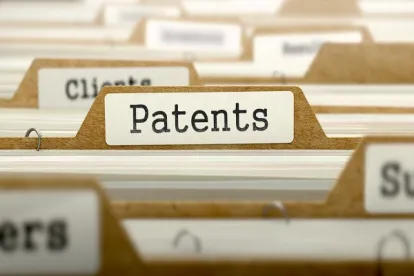In its Final Written Decision, the Board determined that claims 1-43 of the ‘117 patent are unpatentable under 35 U.S.C. § 103 and that Patent Owner had not demonstrated that proposed substitute claims 44 and 45 are patentable over the prior art of record. The ‘117 patent “is directed to an electrolyte for high voltage wet tantalum or aluminum capacitors.” Following institution of trial, Patent Owner conceded “that no claims of the ‘117 patent are patentable over the grounds set forth in the Petition” and “filed a non-contingent motion to amend the claims of the ‘117 patent.”
The Board first briefly addressed claim construction, concluding that “no explicit constructions are required in order to resolve the issues pending before the Board.” The Board then disposed of the patentability of the original claims. In view of Patent Owner’s concession “and upon review of Petitioner’s arguments,” the Board found “that Petitioner has proven by a preponderance of the evidence that claims 1-43 of the ’117 patent are unpatentable under 35 U.S.C. § 103.”
The Board next addressed the patentability of proposed substitute claims 44 and 45 where the Patent Owner bears the burden of proof.
As part of this showing, Patent Owner must demonstrate (1) the amendment responds to a ground of unpatentability involved in the trial; (2) the amendment does not seek to enlarge the scope of the claims of the patent or introduce new subject matter; (3) the amendment proposes a reasonable number of substitute claims; and (4) the proposed claims are supported in the original disclosure. 37 C.F.R. § 42.121.
In this case, the Board was persuaded that these requirements were met.
The Board therefore turned to “whether Patent Owner has met its burden of proof to show that proposed substitute claims 44 and 45 are patentable over the prior art of record.” The Board found that the prior art of record disclosed all claim limitations and provided explicit disclosure “that acetic acid may be replaced in an electrolyte solution with organic acids of the aliphatic series, including butyric acid and isobutyric acid.” The Board found that Patent Owner, however, “does not point to any persuasive evidence to support or explain why a person of ordinary skill in the art would not have considered isobutyric acid, as implied in Clark and expressly identified in GB 466,193, to be a suitable substitute for acetic acid in the electrolyte of Shah.” Further, that Board stated that “[a]lthough we agree with Patent Owner that the transitional phrase ‘consisting essentially of’ prohibits the inclusion of constituents that would ‘materially affect the basic and novel properties of the invention,’ Patent Owner has not explained persuasively why the combination of Shah, Clark, and GB 466,193 requires the addition of either boric acid, a thickening agent, or a resistivity modifying salt in the electrolyte of Shah.” “Moreover, even if boric acid, or a thickening agent and a resistivity-reducing salt were required in the combination of Shah, Clark, and GB 466,193, at this stage of the proceeding Patent Owner bears the burden of demonstrating that these constituents would have a material effect on the basic and novel properties of the claimed electrolytes.”
The Board found Patent Owner’s arguments to be insufficient to “carry Patent Owner’s burden to show that the boric acid of Clark or the thickening agent and resistivity-reducing salt of GB 466,193 would in fact ‘materially affect the basic and novel properties’ of the electrolyte of proposed substitute claim 44.” Regarding dependent claim 45, Patent Owner relies on its previous arguments for claim 44. Accordingly, the Board was not persuaded that Patent Owner had carried its burden to demonstrate that proposed substitute claims 44 and 45 are patentable over the prior art of record.
AVX Corporation v. Greatbatch Ltd., IPR2014-01361
Paper 30: Final Written Decision
Dated: December 30, 2015
Patent: 6,687,117 B2
Before: Jeremy M. Plenzler, Jon B. Tornquist, and Beth Z. Shaw
Written by: Tornquist
Related Proceeding: U.S. Patent App. No. 14/534,357 (reissue application)



 />i
/>i
